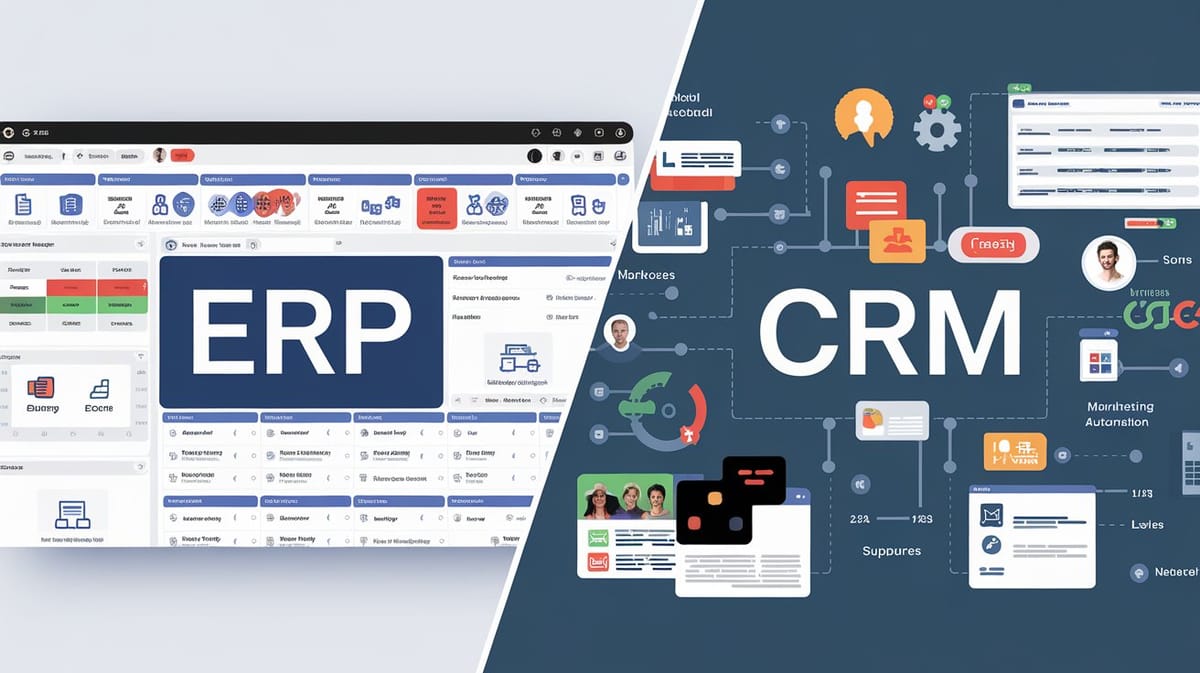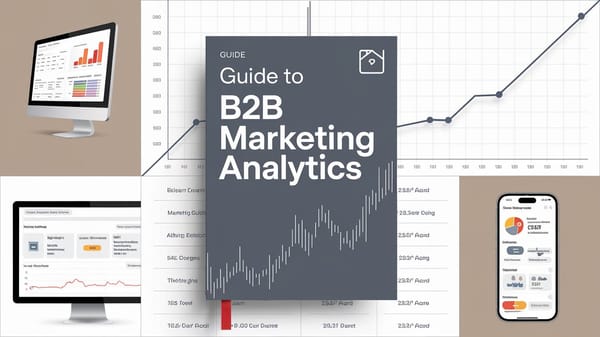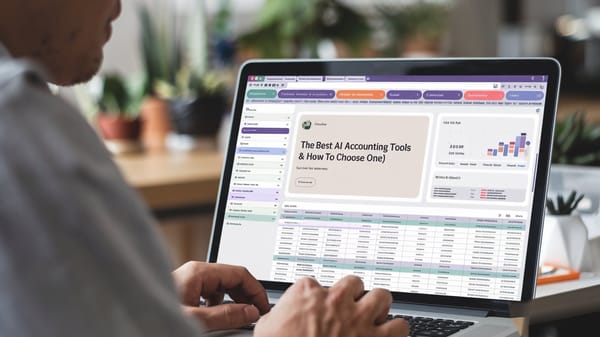ERP and CRM: What’s the difference?

In the rapidly evolving landscape of business technology, two systems stand out for their transformative potential: Enterprise Resource Planning (ERP) and Customer Relationship Management (CRM). Both are pivotal in streamlining operations and enhancing productivity, yet they serve distinct roles within an organization. Understanding these differences is crucial for businesses aiming to leverage technology for competitive advantage.
ERP systems are designed to manage and integrate the core processes of a business, encompassing areas such as finance, supply chain management, human resources, and procurement. By centralizing data from various back-office functions, ERP solutions provide a unified platform that enhances decision-making and operational efficiency. This integration helps break down data silos, offering a single source of truth that is vital for accurate financial management and compliance.
On the other hand, CRM systems focus on the front-office functions, primarily dealing with customer interactions, sales, marketing, and customer service. These systems are essential for managing the customer lifecycle, from lead generation to post-sale support, thereby improving customer satisfaction and loyalty. CRMs provide a 360-degree view of customer interactions, enabling businesses to personalize their marketing efforts and enhance customer engagement.
While there is some overlap in functionality, such as data analytics and reporting, ERP and CRM systems are not interchangeable. Each serves a unique purpose, and their integration can unlock significant business potential by providing a comprehensive view of both operational and customer-centric data. This integration is particularly beneficial for aligning sales and operations, ensuring that businesses can respond swiftly to market demands and customer needs.
You can also visit Oncely.com to find more Top Trending AI Tools. Oncely partners with software developers and companies to present exclusive deals on their products. One unique aspect of Oncely is its “Lifetime Access” feature, where customers can purchase a product once and gain ongoing access to it without any recurring fees. Oncely also provides a 60-day money-back guarantee on most purchases, allowing customers to try out the products and services risk-free.
Oncely are hunting for the most fantastic AI & Software lifetime deals like the ones below or their alternatives:

Table of Contents
- Understanding ERP and CRM Systems
- Functional Differences
- Key Features and Capabilities
- Integration and Overlap
- Use Cases and Industry Applications
- Benefits and Challenges
- Key Differences Between ERP and CRM
- Functional Scope and Focus
- Integration and Overlap
- Cost and Implementation
- Use Cases and Industry Applications
- Strategic Benefits and Challenges
- Benefits of Integrating ERP and CRM
- Enhanced Data Accuracy and Consistency
- Improved Customer Experience
- Streamlined Business Processes
- Enhanced Reporting and Analytics
- Increased Sales and Revenue
- Optimized Inventory Management
- Enhanced Collaboration and Communication
- Scalability and Flexibility
- Cost Savings
Understanding ERP and CRM Systems
Functional Differences
Enterprise Resource Planning (ERP) and Customer Relationship Management (CRM) systems serve distinct functions within a business, each addressing different operational needs. ERP systems are designed to manage and integrate the core processes of a business, such as finance, supply chain, manufacturing, and human resources. They provide a centralized database that facilitates the flow of information across various departments, thereby enhancing operational efficiency and decision-making. ERP systems are particularly beneficial for large organizations with complex operations, as they help streamline processes and reduce redundancies (Oracle).
In contrast, CRM systems focus on managing a company's interactions with current and potential customers. They are primarily used to enhance front-office functions, including sales, marketing, and customer service. CRM systems provide tools for tracking customer interactions, managing sales pipelines, and executing marketing campaigns. This focus on customer engagement helps businesses improve customer satisfaction and loyalty, ultimately driving sales growth (CRM.org).
Key Features and Capabilities
ERP systems offer a wide range of features that support back-office operations. These include financial management, where ERP systems automate accounting processes and provide real-time financial reporting. Supply chain management is another critical feature, enabling businesses to optimize inventory levels, manage procurement, and streamline logistics. Human resources management within ERP systems includes functionalities for payroll, employee records, and performance management (GeeksforGeeks).
CRM systems, on the other hand, are equipped with features that enhance customer-facing activities. These include contact management, which provides a 360-degree view of customer interactions and history. Sales pipeline management tools help sales teams track leads and opportunities, while marketing automation features enable the execution of targeted campaigns. CRM systems also offer customer service tools, such as helpdesk support and case management, to improve customer satisfaction (Forbes).
Integration and Overlap
While ERP and CRM systems have distinct functionalities, there is some overlap, particularly in areas like sales and customer data management. Many ERP systems include basic CRM features, such as contact management and order tracking, to provide a more comprehensive solution. However, these features are often less sophisticated than those found in dedicated CRM systems. Conversely, CRM systems do not typically include ERP functionalities, such as financial management or supply chain operations (Oracle).
Integration between ERP and CRM systems can offer significant benefits, allowing businesses to leverage the strengths of both systems. For example, integrating CRM data with ERP systems can provide a more complete view of customer interactions and financial transactions, enhancing decision-making and operational efficiency. This integration can also help eliminate data silos, ensuring that all departments have access to consistent and up-to-date information (CRM.org).
Use Cases and Industry Applications
The choice between ERP and CRM systems often depends on the specific needs and size of a business. For startups and small businesses, CRM systems are typically the better starting point. They are generally more affordable and easier to implement, helping these businesses grow their customer base and build brand awareness. CRM systems are particularly valuable in industries with a strong focus on customer interactions, such as retail, hospitality, and financial services (CRM.org).
Larger, more established companies with complex supply chains and extensive operational needs benefit more from ERP systems. These systems provide the necessary tools to manage and streamline broader business processes, making them ideal for industries such as manufacturing, logistics, and healthcare. In these sectors, ERP systems help optimize resource planning, production scheduling, and compliance management (Forbes).
Benefits and Challenges
Both ERP and CRM systems offer significant benefits, but they also come with challenges. ERP systems can greatly enhance operational efficiency by automating manual tasks and providing a unified view of business processes. This can lead to cost savings, improved productivity, and better compliance with regulatory requirements. However, ERP implementations can be complex and costly, requiring significant time and resources to deploy and maintain (Oracle).
CRM systems, by improving customer engagement and satisfaction, can drive revenue growth and enhance brand loyalty. They provide valuable insights into customer behavior and preferences, enabling businesses to tailor their offerings and improve service delivery. However, CRM systems require careful management to ensure data accuracy and user adoption. Additionally, businesses must continuously update and refine their CRM strategies to keep pace with changing customer expectations and market trends (CRM.org).
In conclusion, while ERP and CRM systems serve different purposes, they are both critical components of a successful business IT strategy. Understanding their differences and how they can complement each other is essential for businesses looking to optimize their operations and enhance customer relationships.
Key Differences Between ERP and CRM
Functional Scope and Focus
Enterprise Resource Planning (ERP) and Customer Relationship Management (CRM) systems serve distinct functions within an organization, each focusing on different aspects of business operations. ERP systems are designed to integrate and manage core business processes, including finance, human resources, supply chain, and manufacturing. They provide a centralized platform for managing internal operations, ensuring data consistency and operational efficiency across departments (Oracle).
In contrast, CRM systems are primarily focused on managing customer interactions and relationships. They are used to enhance sales, marketing, and customer service functions by providing tools to track customer interactions, manage leads, and personalize marketing efforts. CRM systems aim to improve customer satisfaction and retention by offering a comprehensive view of customer data and interactions (CRM.org).
Integration and Overlap
While ERP and CRM systems have distinct primary functions, there is some overlap in their capabilities. Many ERP systems include CRM functionalities, such as sales order processing and customer data management, to provide a more integrated approach to business operations. However, CRM systems do not typically include ERP functionalities, such as financial management or supply chain operations (Oracle).
The integration of ERP and CRM systems can offer significant advantages by providing a seamless flow of information between customer-facing and back-office operations. This integration enhances decision-making and operational efficiency by ensuring that all departments have access to consistent and up-to-date information (Top10ERP).
Cost and Implementation
The cost and complexity of implementing ERP and CRM systems can vary significantly. ERP systems are generally more expensive and complex to implement due to their broader scope and the need for extensive customization to fit specific business processes. The implementation of an ERP system often requires significant time and resources, including training and change management efforts (Forbes).
CRM systems, on the other hand, are typically less costly and easier to implement. They are often more affordable for small and medium-sized businesses, providing a quicker return on investment by enhancing customer engagement and sales performance. The choice between ERP and CRM systems, or a combination of both, should be based on the specific needs and resources of the organization (CRM.org).
Use Cases and Industry Applications
The choice between ERP and CRM systems often depends on the size and complexity of the organization, as well as its specific business needs. ERP systems are particularly beneficial for larger organizations with complex supply chains and extensive operational requirements. They provide the necessary tools to manage and streamline broad business processes, from procurement to production and financial management (GeeksforGeeks).
CRM systems are more suited for businesses that prioritize customer engagement and sales growth. They are ideal for startups and small businesses looking to build their customer base and enhance brand awareness. CRM systems help manage customer interactions, track sales pipelines, and run targeted marketing campaigns, making them a valuable tool for sales and marketing teams (Top10ERP).
Strategic Benefits and Challenges
Both ERP and CRM systems offer strategic benefits that can drive business growth and efficiency. ERP systems provide a comprehensive view of business operations, enabling better resource allocation and strategic planning. They help organizations achieve data accuracy and real-time insights, leading to improved decision-making and cost optimization (Oracle).
CRM systems, by focusing on customer relationships, help businesses improve customer satisfaction and loyalty. They provide detailed insights into customer preferences and behaviors, allowing for personalized interactions and tailored marketing efforts. This focus on customer engagement can lead to increased sales and customer retention (Top10ERP).
However, the implementation of these systems also presents challenges. ERP systems require significant investment and organizational change, which can be a barrier for some businesses. CRM systems, while easier to implement, require a strong focus on data management and integration to ensure that customer information is accurate and accessible across the organization (Forbes).
In conclusion, understanding the key differences between ERP and CRM systems is crucial for businesses looking to optimize their operations and customer interactions. By carefully evaluating their specific needs and resources, organizations can choose the right system or combination of systems to achieve their strategic goals.
Benefits of Integrating ERP and CRM
Enhanced Data Accuracy and Consistency
Integrating Enterprise Resource Planning (ERP) and Customer Relationship Management (CRM) systems significantly enhances data accuracy and consistency across an organization. By consolidating data from various departments, businesses can eliminate data silos and ensure that all teams have access to the same, up-to-date information. This integration reduces the risk of errors that can occur when data is manually transferred between systems. According to a study by Aberdeen Group, companies that integrate their ERP and CRM systems experience a 36% improvement in data accuracy. This improvement is crucial for making informed business decisions and maintaining a competitive edge.
Improved Customer Experience
The integration of ERP and CRM systems allows businesses to provide a more personalized and efficient customer experience. With a unified view of customer interactions, sales, and service history, companies can tailor their offerings and communications to meet individual customer needs. This holistic view enables customer service representatives to resolve issues more quickly and effectively, leading to higher customer satisfaction. A report by Nucleus Research found that organizations integrating these systems saw a 20% increase in customer satisfaction scores. This improvement is attributed to the seamless flow of information between departments, which enhances the overall customer journey.
Streamlined Business Processes
Integrating ERP and CRM systems streamlines business processes by automating workflows and reducing manual intervention. This integration allows for the automatic transfer of data between systems, such as order details from CRM to ERP for fulfillment. As a result, businesses can reduce processing times and improve operational efficiency. According to Forrester Research, companies that have integrated ERP and CRM systems report a 15% reduction in operational costs due to streamlined processes. This efficiency gain enables organizations to allocate resources more effectively and focus on strategic initiatives.
Enhanced Reporting and Analytics
The integration of ERP and CRM systems provides businesses with enhanced reporting and analytics capabilities. By combining data from both systems, organizations can generate comprehensive reports that offer insights into customer behavior, sales trends, and operational performance. This integrated data approach allows for more accurate forecasting and strategic planning. A study by Gartner indicates that companies with integrated ERP and CRM systems experience a 25% improvement in their ability to generate actionable insights. These insights are critical for identifying growth opportunities and optimizing business strategies.
Increased Sales and Revenue
Integrating ERP and CRM systems can lead to increased sales and revenue by providing sales teams with better tools and information. With access to real-time inventory levels, pricing, and customer history, sales representatives can make more informed decisions and close deals faster. This integration also supports cross-selling and upselling opportunities by providing a complete view of customer preferences and purchase history. According to a report by IDC, businesses that integrate their ERP and CRM systems see an average revenue increase of 10% within the first year. This increase is driven by improved sales efficiency and enhanced customer engagement.
Optimized Inventory Management
The integration of ERP and CRM systems optimizes inventory management by providing real-time visibility into stock levels and demand forecasts. This visibility allows businesses to maintain optimal inventory levels, reducing the risk of overstocking or stockouts. By aligning sales forecasts with inventory data, companies can improve their supply chain efficiency and reduce carrying costs. A study by McKinsey & Company found that organizations with integrated systems experience a 20% reduction in inventory costs. This reduction is achieved through better demand planning and inventory optimization.
Enhanced Collaboration and Communication
Integrating ERP and CRM systems fosters enhanced collaboration and communication across departments. With a unified platform, teams can share information more easily and work together more effectively. This integration breaks down departmental silos and encourages a more collaborative work environment. According to a survey by TechValidate, 75% of companies report improved collaboration after integrating their ERP and CRM systems. This improvement leads to faster decision-making and a more agile organization.
Scalability and Flexibility
The integration of ERP and CRM systems provides businesses with greater scalability and flexibility. As organizations grow, integrated systems can easily accommodate increased data volumes and additional users without significant disruptions. This scalability is essential for businesses looking to expand their operations or enter new markets. A report by Deloitte highlights that companies with integrated systems are 30% more likely to successfully scale their operations. This success is attributed to the seamless integration of processes and data, which supports business growth and adaptation.
Cost Savings
Integrating ERP and CRM systems can lead to significant cost savings by reducing the need for duplicate data entry and minimizing errors. By automating processes and improving data accuracy, businesses can lower operational costs and increase productivity. A study by Panorama Consulting Solutions found that organizations with integrated systems experience a 20% reduction in IT costs. These savings are achieved through reduced maintenance and support requirements, as well as improved system efficiency.
In summary, the integration of ERP and CRM systems offers numerous benefits, including enhanced data accuracy, improved customer experience, streamlined processes, and increased sales. These advantages contribute to a more efficient and competitive organization, capable of adapting to changing market conditions and customer demands.





